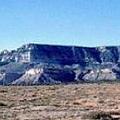 向來反對利用科科尼諾的地下水資源來燒製黑梅薩煤漿的美國民間團體「C Aquifer for Diné」(人民的科科尼諾地下水,Diné為納瓦侯語,意指人民),日前在溫多羅克所召開的納瓦侯族春季大會中提出一份「停止攫取納瓦侯族水源」請願書。17日正式開幕的春季大會,針對美國政府近來為了方便煤炭運輸,而提出從科科尼諾地下水層提取水源的計劃進行討論。
向來反對利用科科尼諾的地下水資源來燒製黑梅薩煤漿的美國民間團體「C Aquifer for Diné」(人民的科科尼諾地下水,Diné為納瓦侯語,意指人民),日前在溫多羅克所召開的納瓦侯族春季大會中提出一份「停止攫取納瓦侯族水源」請願書。17日正式開幕的春季大會,針對美國政府近來為了方便煤炭運輸,而提出從科科尼諾地下水層提取水源的計劃進行討論。
西皮博迪(Peabody Western)是世界第一大煤礦開採公司皮博迪集團)的子公司,而爭議中的地下水層則是該地區霍皮族與納瓦侯族主要的飲用水來源。
該團體表示,西納瓦侯自治區當局下的各地方自治社區近年已經正式決議通過反對有計畫地消耗科科尼諾地下水,「而且,事實上也已經和納瓦侯原住民自治區總統胥里(Joe Shirley)舉行過數次會議,提出這些重要且迫在眉睫的關切。然而胥里卻已經先進行秘密協商和計畫。」
該團體表示,這項科科尼諾地下水計畫乃是數年來南加州愛迪生電力公司(Southern California Edison)、「鹽河計畫」水電公司(Salt River Project,SRP)、納瓦侯原住民自治區與霍皮族部落關起門來在背後秘密協商的結果。
 在春季大會上,霍皮族和納瓦侯族自治區領袖同時公佈了環境團體「自然資源防護協會」(NRDC)的新科學報告,該報告推斷皮博迪公司超限用水,抽取的地下水量超過法定標準,有危害印地安原住民水源供應之虞;該報告同時也發現數年來工業抽取地下水已經造成維生資源的重大損害。
在春季大會上,霍皮族和納瓦侯族自治區領袖同時公佈了環境團體「自然資源防護協會」(NRDC)的新科學報告,該報告推斷皮博迪公司超限用水,抽取的地下水量超過法定標準,有危害印地安原住民水源供應之虞;該報告同時也發現數年來工業抽取地下水已經造成維生資源的重大損害。
內政部露天採礦局(OSM)的官員則聲稱,他們沒有看到任何皮博迪公司傷害地下水源的跡象。
然而以政府所持有的數據來分析,自然資源防護協會發現早在2000年之時,9處受到監控的水泉有7處的水量短少超過10%,而超過受監控的水井則有3分之1的水面已經降到標準以下,恐有地層坍塌或地下蓄水層受到污染的疑慮。
皮博迪公司係利用地下水來製造水製煤漿及粉狀煤礦,同時用唧筒抽吸煤漿,讓它越過273英里遠的沙漠,然後灌注到南加州愛迪生公司位在內華達州拉芙林的摩哈維發電廠。該電廠已經在去(2005)年因為廢氣排放問題達成關廠協議,但是皮博迪公司希望能延展開採煤礦的許可,期望電廠可能在翻新後回到生產線上繼續運作。
從皮博迪公司的觀點來看,繼續營運摩哈維電廠對公眾有益,因為它能提供低價電力、數百個工作機會,以及霍比族與納瓦霍族自治區穩定的稅收來源。
The C Aquifer for Diné, a grassroots group opposing use of the Coconino Aquifer's water to slurry coal from Black Mesa Mine, is in Window Rock for the Navajo Nation Council Spring Session armed with a petition "to stop the Navajo water grab." The Spring Session, which opens today, is expected to consider recently disclosed plans to dewater the C-Aquifer for coal transportation purposes.
Peabody Western is part of the world's largest coal company, Peabody Energy, and the aquifer at issue serves as a primary source of drinking water for the area's Hopi and Navajo residents.
The local self-governing communities in the Western Navajo Agency have passed resolutions in recent years opposing the planned depletion of the C-Aquifer, "and, in fact, have had several meetings with President Shirley to address these critical concerns. Yet, Dr. Shirley has proceeded ahead with the secret negotiations and planning," the group said.
The group said the C-Aquifer plans were the result of years of secret negotiations conducted behind closed doors by Southern California Edison, Peabody, Salt River Project, the Navajo Nation and the Hopi Tribe.
Leaders of the Hopi and Navajo nations will be presented this week with the findings of a new scientific report by the Natural Resources Defense Council (NRDC). The report concludes that Peabody has already exceeded legal limits established to protect Hopi and Navajo water supplies, and found that years of industrial pumping has already caused material damage to the vital resource.
Officials from Office of Surface Mining Reclamation and Enforcement, part of the U.S. Department of Interior, have said they have seen no signs that Peabody is harming the aquifer.
But using the government's own data, NRDC found as early as 2000 that seven of nine monitored springs show a decline in excess of 10 percent and more than a third of monitored wells had fallen below the water level needed to guarantee against collapse or contamination of the underground reservoir.
Peabody uses the water to produce a slurry made of water and pulverized coal and pumps the slurry across 273 miles of desert to the Southern California Edison Company's Mohave Generating Station in Laughlin, Nevada. The plant was shut late last year under a consent decree involving air emissions, but Peabody wants to extend its permit to operate the mine, anticipating that the power plant may be retrofitted, and come back online.
In Peabody's view, continued operation of the Mohave Generating Station is in the public interest, because it provides low-cost electricity, hundreds of jobs and a stable revenue source for the Hopi and Navajo nations.


